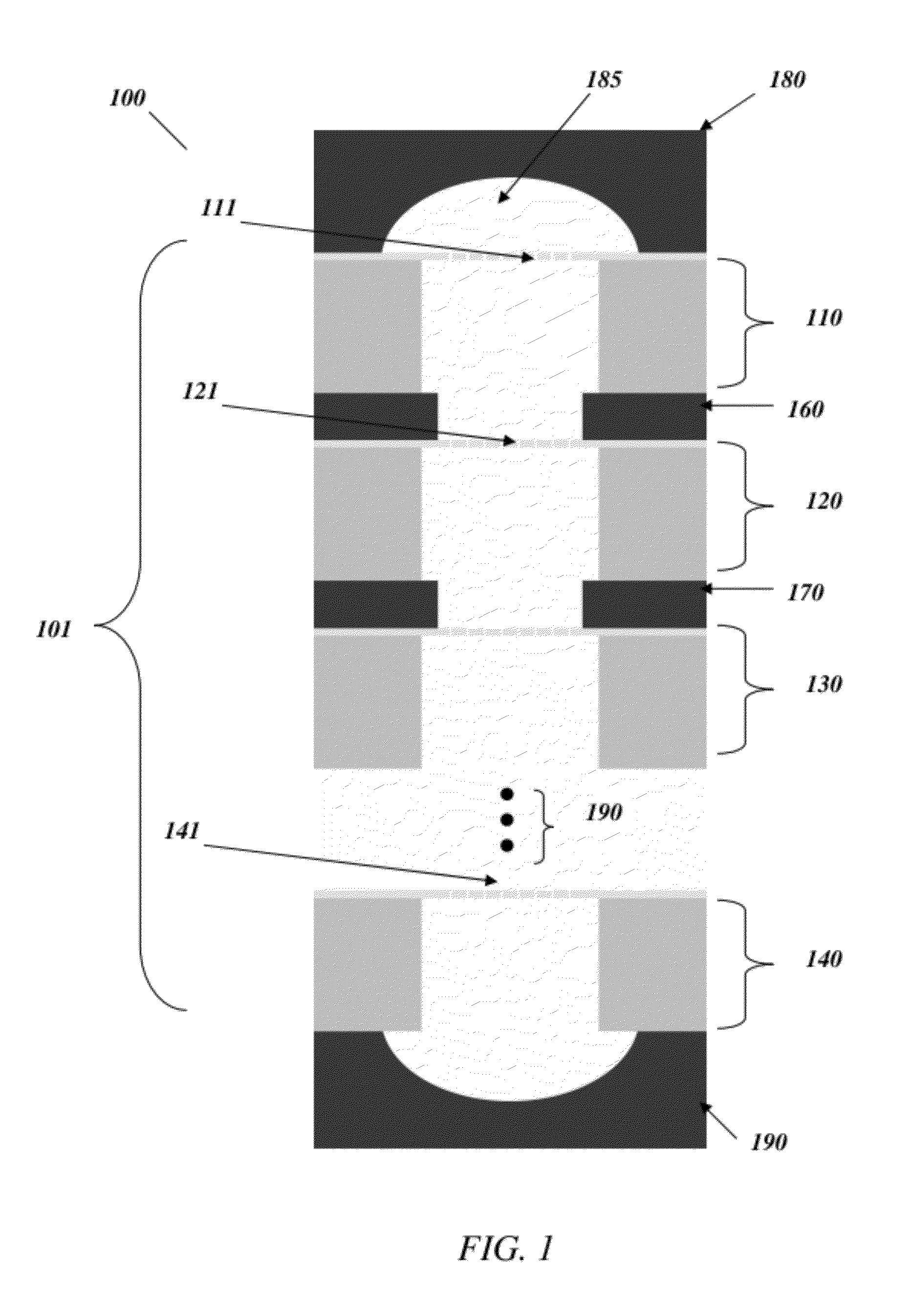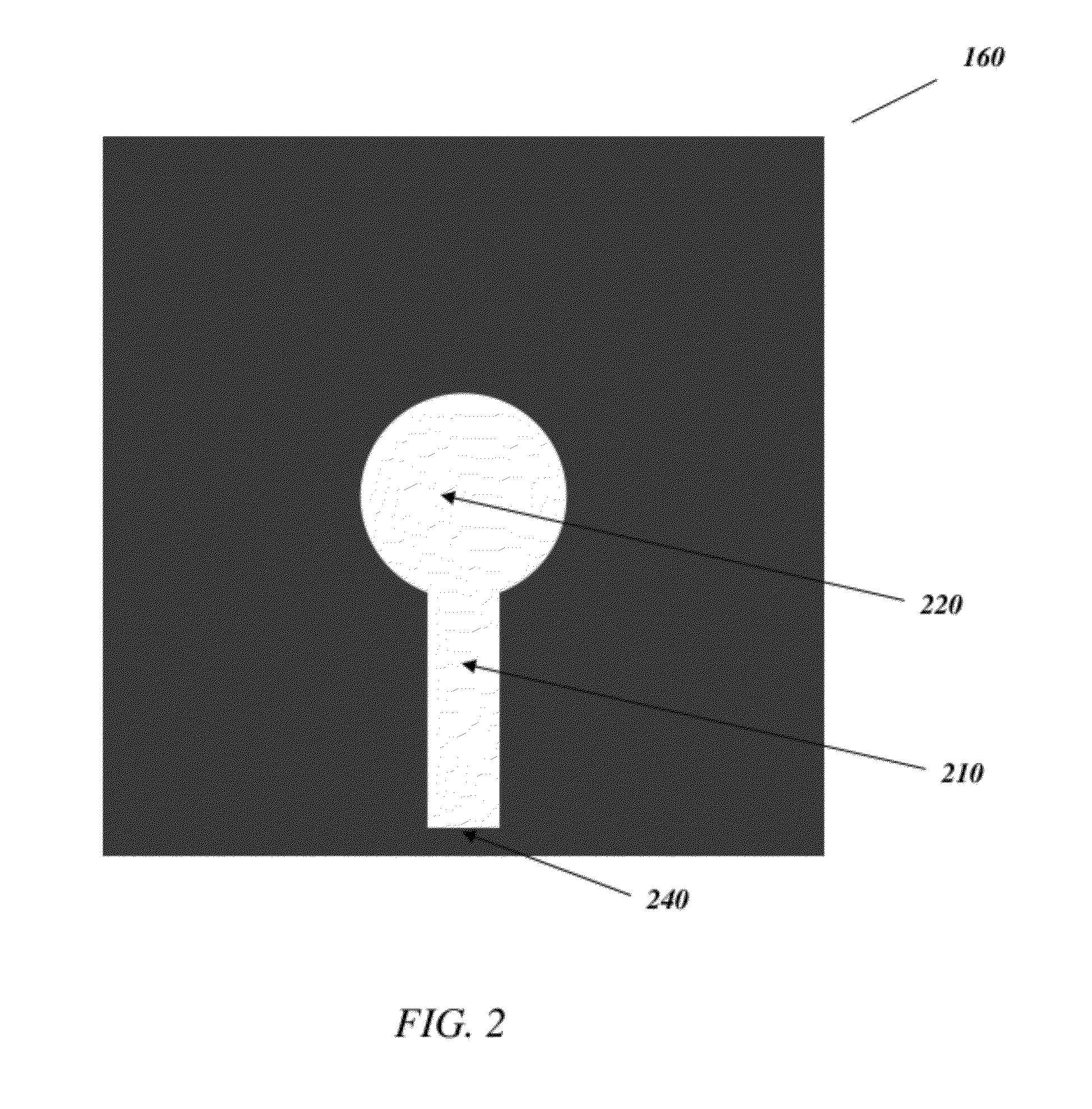Particulate nanosorting stack
a nano-stack and particle technology, applied in the field of filters, can solve the problems of non-specific techniques, physical damage, and inability to achieve effective nanometer-scale filtration options
- Summary
- Abstract
- Description
- Claims
- Application Information
AI Technical Summary
Benefits of technology
Problems solved by technology
Method used
Image
Examples
example 1
Fabricating Nanopores
[0122]A hard mask of aluminum oxide was sputtered onto a silicon substrate and patterned to form nanodisks having a diameter of about 35 nm spaced evenly apart. A mixture of SF6 / C4F8 was used to etch the silicon substrate around the hard mask, thereby forming a number of silicon nanopillars with diameters of about 35 nm. FIG. 6 shows silicon nanopillars after removal of the hard mask. After removing the aluminum oxide hard mask using hydrofluoric acid, the nanopillars were oxidized in a furnace at a temperature of above 850° C. The methods in this example resulted in an un-oxidized silicon nanopillar core having a diameter of about 2 nm. Mechanical polishing was performed to remove portions of the nanopillars in order to expose the un-oxidized silicon core at the base of the nanopillars. XeF2 was used to etch the remaining un-oxidized silicon cores to form nanopores with a diameter of about 2 nm. XeF2 was also used to etch a portion of the backside of the substr...
example 2
Fabricating Nanopores
[0123]A silicon substrate is patterned and etched to form nanopillars having a diameter of about 100 nm. The etching is performed as described in M D Henry et al 2009 Nanotechnology 20 255305. The nanopillars are oxidized at 900 C for 5 hours to form silicon dioxide nanopillars comprising about 20 nm silicon cores. Aluminum oxide is deposited over the silicon dioxide layer to strengthen the membrane. Nanopillars are snapped off with a q-tip. A hole is patterned on the back-side of the 400 micron thick wafer. A cryogenic silicon etch is performed to go about 250 microns into the wafer, following the masked hole. XeF2 is used to etch the cores of silicon out of the nanopillars, thereby forming nanopores in the substrate.
example 3
Forming a Microfluidic Device to Sort Particles
[0124]Starting with bare silicon, PMMA (poly methylmethacrylate) was spun onto a wafer and baked at 180 C to drive off the solvents suspending the PMMA. The PMMA was irradiated with an electron beam using an electron beam pattern generator (EBPG) at 100 kV and 1.5 nanoAmp beam current. The locations where the electron beam sliced through the PMMA were dissolved away in a 1:3 mixture of Methyl-Isobutyl-Ketone (MIBK) and Isopropanol thus defining an array of 150 nm holes and a separate array of 50 nm holes in the PMMA. Aluminum oxide was sputter deposited onto the sample and into the holes using a DC magnetron sputtering system at 400 W with a 1:5 mixture of O2:Ar process gas chemistry. The chip was then placed in chloroform to dissolve away the PMMA. This removed the aluminum oxide sitting on the PMMA but left the alumina that had been deposited into the circular holes defined in the PMMA. Thus, a series of 150 and 50 nm disks of aluminu...
PUM
| Property | Measurement | Unit |
|---|---|---|
| diameter | aaaaa | aaaaa |
| diameter | aaaaa | aaaaa |
| width | aaaaa | aaaaa |
Abstract
Description
Claims
Application Information
 Login to View More
Login to View More - R&D
- Intellectual Property
- Life Sciences
- Materials
- Tech Scout
- Unparalleled Data Quality
- Higher Quality Content
- 60% Fewer Hallucinations
Browse by: Latest US Patents, China's latest patents, Technical Efficacy Thesaurus, Application Domain, Technology Topic, Popular Technical Reports.
© 2025 PatSnap. All rights reserved.Legal|Privacy policy|Modern Slavery Act Transparency Statement|Sitemap|About US| Contact US: help@patsnap.com



